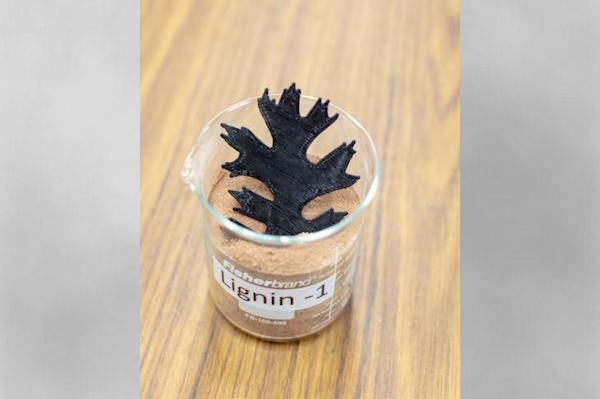Oak Ridge Creates Renewable Composite Material with Lignin
ORNL creates printable composite material using biofuel byproduct.

Researchers at Oak Ridge National Laboratories have combined lignin with carbon fiber to create a new renewable 3D printing material. Image courtesy of ORNL.
Latest News
January 20, 2019
Researchers at Oak Ridge National Laboratory (ORNL) have made more progress in their effort to create a renewable 3D printing material using the biomass byproduct called lignin.
Lignin is a byproduct of the biofuel manufacturing process. It’s a polymer found in most plants. While it can be burned to generate power in a biorefinery, those facilities produce so much lignin that it still creates a significant waste stream. ORNL first published research on its lignin work in Applied Materials Today last year.
“Finding new uses for lignin can improve the economics of the entire biorefining process,” said ORNL project lead Amit Naskar.
The research (“A path for lignin valorization via additive manufacturing of high-performance sustainable composites with enhanced 3D printability”) was recently published in the journal Science Advances.
3D Printing Composite Material
The ORNL team combined hardwood lignin with low-melting nylon and carbon fiber to create a new type of composite that can be used in 3D printing.
Lignin can only be heated up to a certain temperature for extrusion before it chars. If it gets too hot for too long, it is too thick for a print nozzle. Combining lignin with nylon increased the material’s room temperature stiffness and reduced its melt viscosity. This gave it a tensile strength similar to nylon, but with a lower viscosity than ABS or polylstyrene.
According to ORNL, the resultant material can heat more easily, flow faster and provides greater strength in the printed item.
“ORNL’s world-class capabilities in materials characterization and synthesis are essential to the challenge of transforming byproducts like lignin into coproducts, generating potential new revenue streams for industry and creating novel renewable composites for advanced manufacturing,” said Moe Khaleel, associate laboratory director for Energy and Environmental Sciences.
Source: ORNL
Subscribe to our FREE magazine, FREE email newsletters or both!
Latest News
About the Author
Brian Albright is the editorial director of Digital Engineering. Contact him at [email protected].
Follow DE





